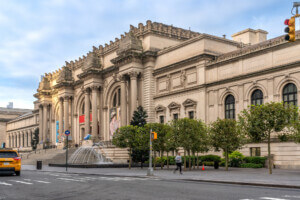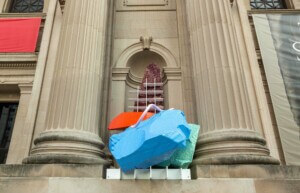As reported in The New York Times last month, Manhattan’s District Attorney seized dozens of looted artifacts from The Met’s collection and plans to return them to locations in India, Italy, and Egypt. This news yet again raises the topics of repatriation and reparation, adding another chapter to the seemingly endless drama of colonization.
A year ago, we taught a summer studio in the Advanced Architectural Design program at Columbia GSAPP and asked our students to calculate the colonial footprint of institutions around them. This past summer, we decided to focus our collective energies on The Metropolitan Museum of Art. This doesn’t mean that MoMA and its board of directors, the Guggenheim and its labor practices, or even Columbia’s own role in their continuous gentrification of Harlem are less troubled; initial projects from 2021 by Sarah Hejazin, Sophia Le, Magdalena Valdevenito, and Leon Duval demonstrated that the colonial and imperial footprints of these institutions require collective dedicated attention. The Met, with its colossal collection, offers an ideal screen on which to project anticolonial intentions.
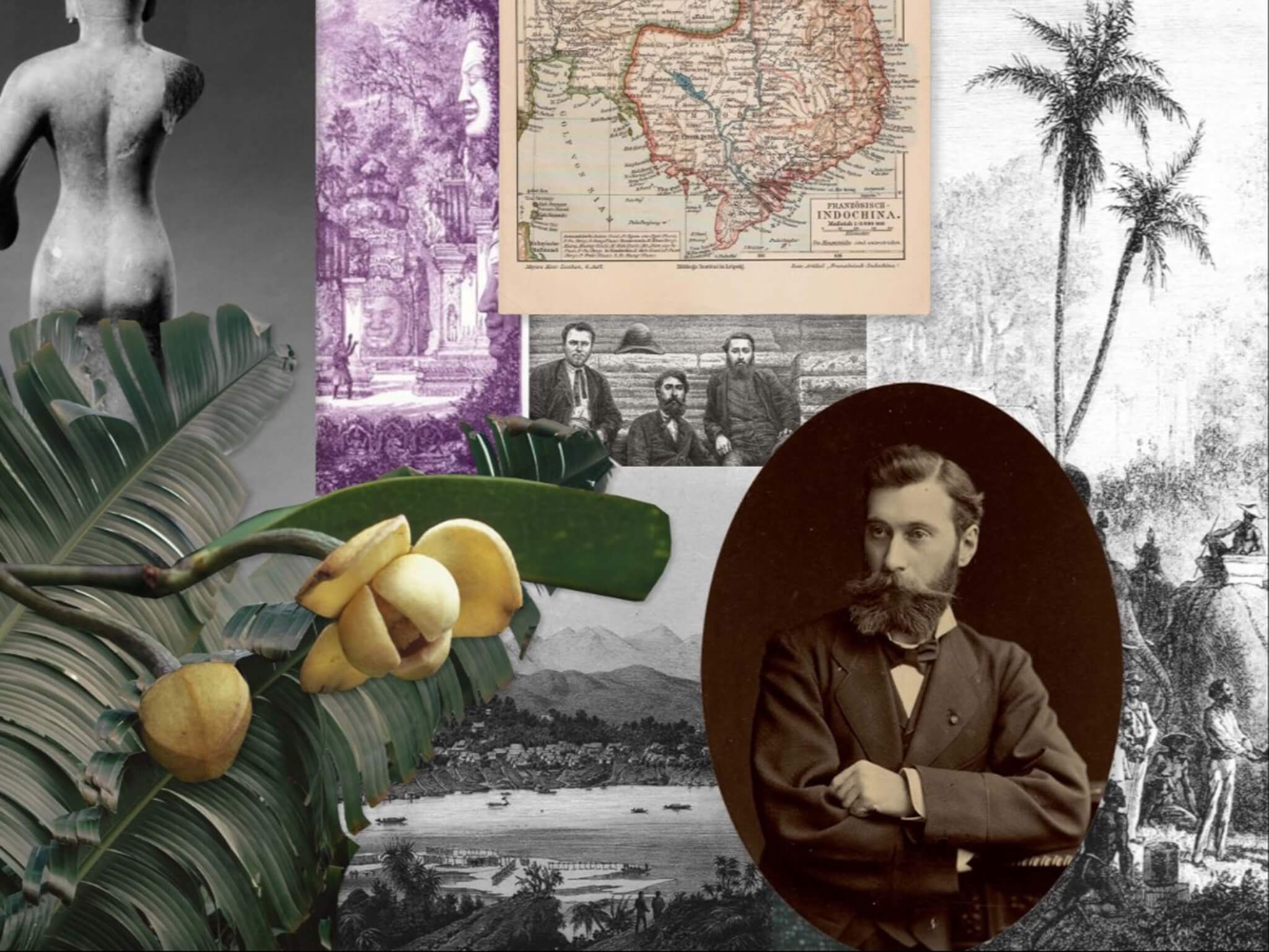
The questions we asked our students in the studio, titled After the Great Loudreading: On Post-Colonial Routes to Repatriation, Reparations, and Reconstructions, were simple: Can we identify what needs to be repatriated or repaired? Who are those affected? Who is enabling and benefiting from theft? The ensuing two months of conversations, findings, and narratives were exhilarating and infuriating, revealing and frustrating. Through telling stories in the form of videos and installations, each of our 11 students embarked on an independent journey of narrative architecture. The resulting projects tie The Met to genocide, white supremacist and settler-colonial propaganda, the U.S. military and its political interference in Latin America, the desecration and mishandling of human remains, Chinese slavery and indentured servitude in the Caribbean, and the banalization of spiritual and ecological practices around the globe.
After the Great Loudreading takes place a year after our own encounter with displaced Taino zemis in a very confusing global display that included Africa and Oceania at the Met. In this context, a project by Luis Salinas tied the plunder that today comprises the collection of the Michael C. Rockefeller Wing in The Met to what used to be Nelson Rockefeller’s Museum of Primitive Art in New York. Salinas’s Re-envisioning the Rockefeller Wing materializes Rockefeller’s violent influence in Latin American politics, and Salinas outlined the propaganda that made possible the collection. As head of the Office of the Coordinator of Inter-American Affairs, Rockefeller’s collection grew in parallel to the CIAA as a tool of influence that, with a staff of over 12,000 journalists, advertising experts, and public opinion analysts, and a governmental budget of over $140 million, produced and disseminated newspapers, propaganda films, and controlled over 75 percent of the news that reached Latin America. This violence is further reinforced in Heitian Guan’s A Frog’s Narrative, a study of U.S.-military interventions in Panama and the growing collection of artifacts seized in that zone.
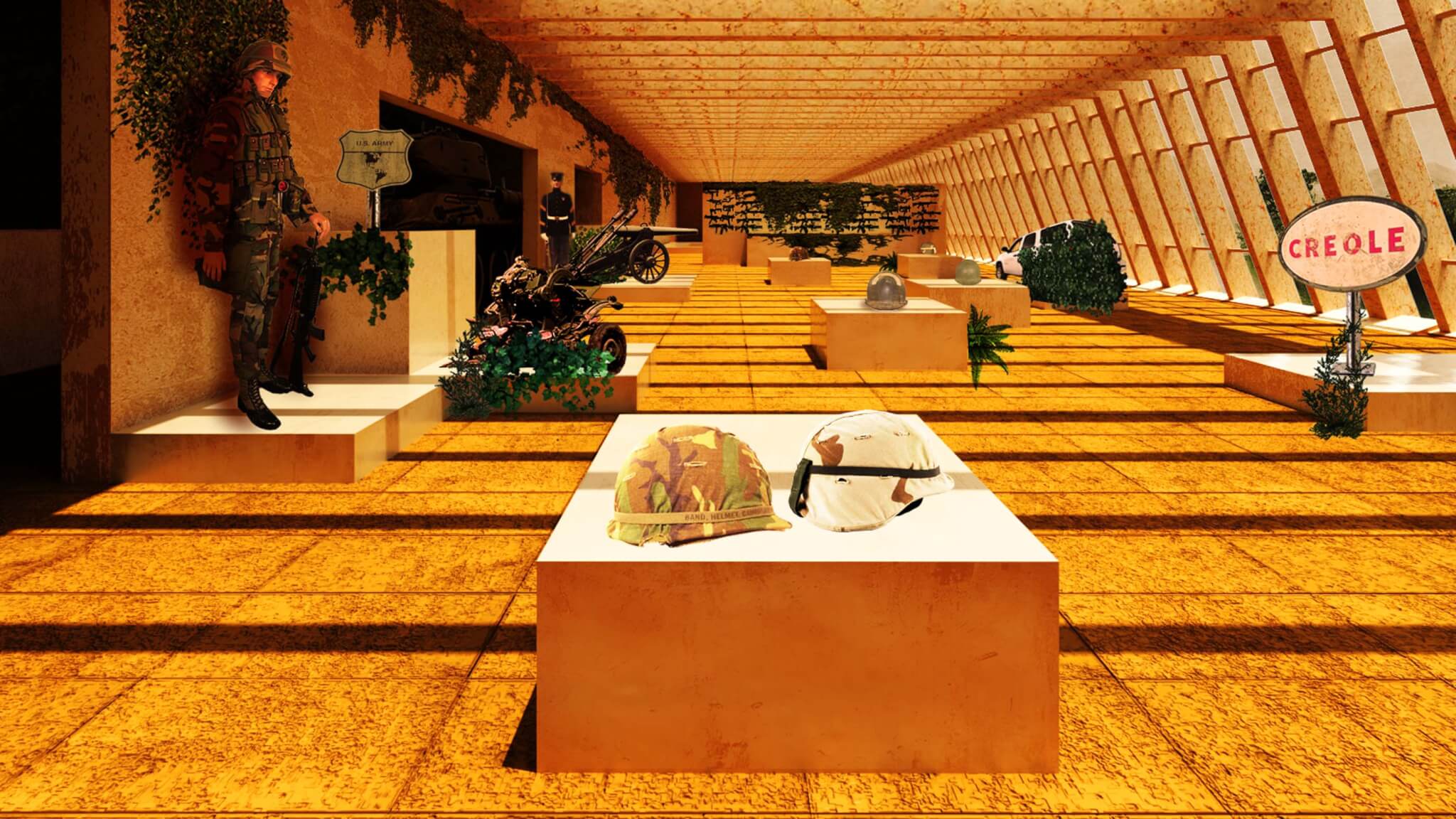
Measuring destruction and death on another planetary direction, Kritanai Pisutigomol beautifully rendered the banal office spaces of The Met. In his narrative Cold to the Touch, a series photorealistic nondescript spaces including the waiting room, the office floor, the research lab, the conservation lab, and the board room are backdrops to the collection’s ties to contraband and the Cambodian genocide. Through combining these architectural spaces with historical documentation, his video establishes connections between the devastating destruction unleashed by the U.S. Army in Cambodia and South Vietnam and how mass killing operations by the Khmer Rouge were funded through sales of Khmer art (part of The Met collection) done via underground networks protected by the governments of Cambodia and Thailand.
Because artifacts were not the only contraband, Zhoufei Tang’s Buddha Sugar Pig dissects, in a cascading chrono-cartographic collage, the entanglement between what she calls “cheap art” and “cheap labor.” “Cheap art” deals with a collection benefiting from the comparatively low prices of Chinese artifacts acquired via trades with art smugglers that illegally exported large quantities of significant cultural relics from China during times of political or social turmoil. “Cheap labor” renders the trafficking of Chinese workers (or “coolies”) to the sugar plantations once slavery was abolished and plantations scrambled to acquire additional bodies to exploit for profit. While the collection includes objects like a silver sugar box engraved with the image of exploited Chinese workers laboring on the sugar plantations, erasure not only takes place on the pictorial representation of a distant past but also in the current whitewashing of history.
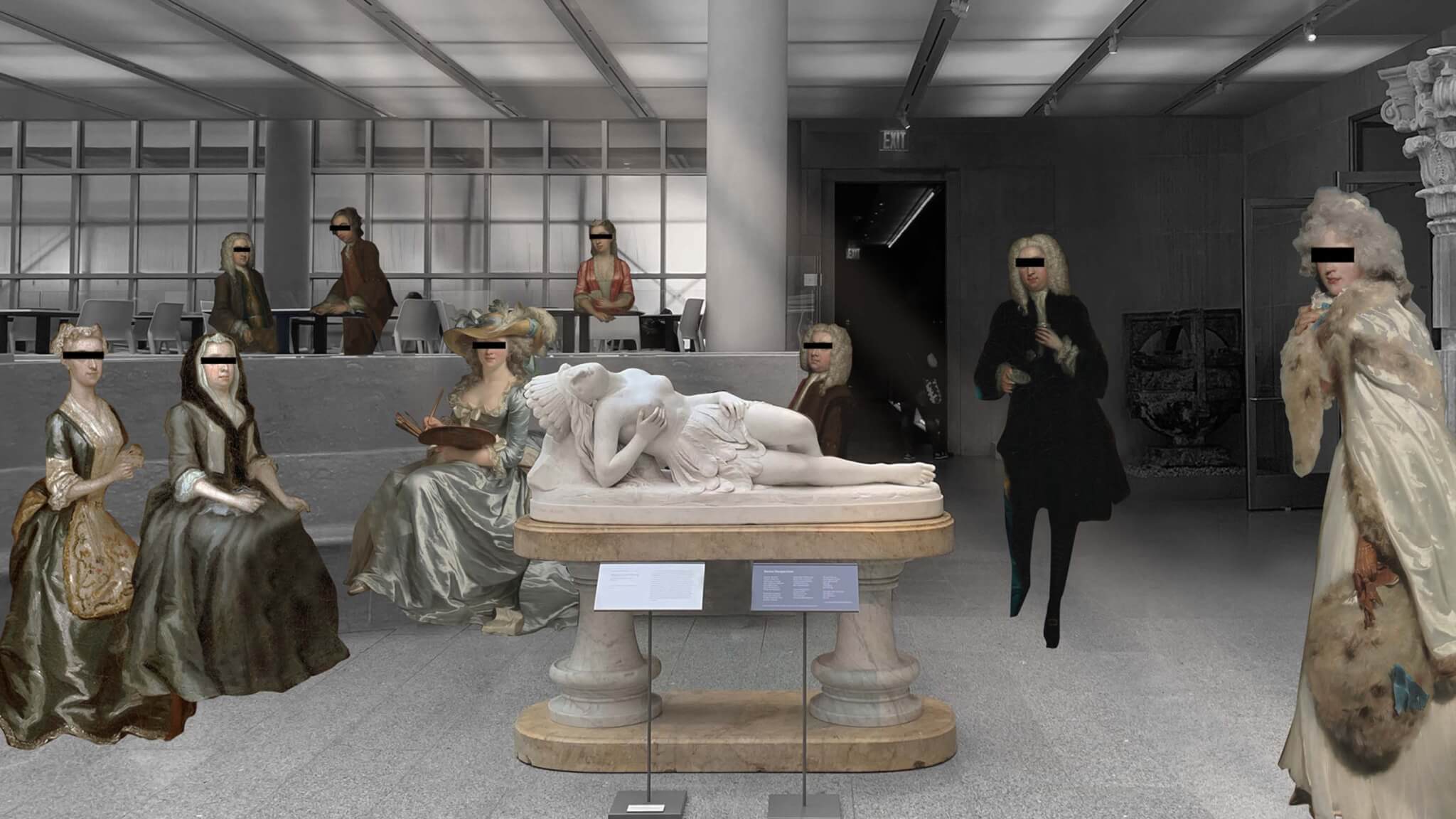
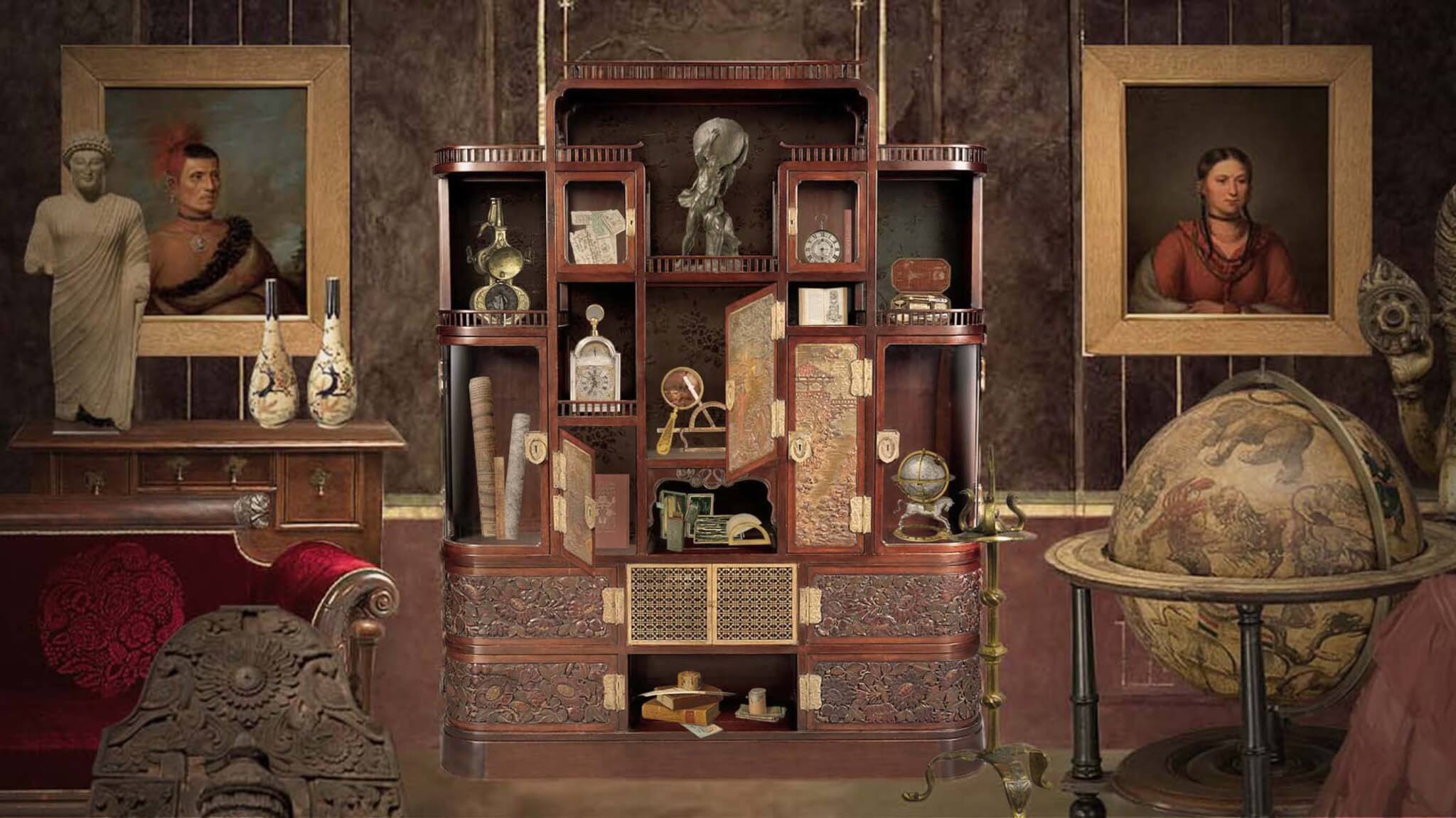
Additional projects explore other topics that center how an ideology of Euro-american supremacy is performed by means of the objectification of non-European bodies and the secularization of their spiritual artifacts, practices, and architectures. Chayanidh Chantraprapawat’s Unheavenly Bodies acknowledges the dozens (perhaps hundreds) of real non-European human remains hidden across the collection. Chris Wierer’s The Temple of Dendur: EXCLUSIVE EVENT SPACE reveals how the displaced temple is turned into a social club for secret parties hosted at the museum, and Simmin He’s Dog’s Words engages with the museums trivialization of animism and zoomorphism in many ancestral spiritual practices around the globe.
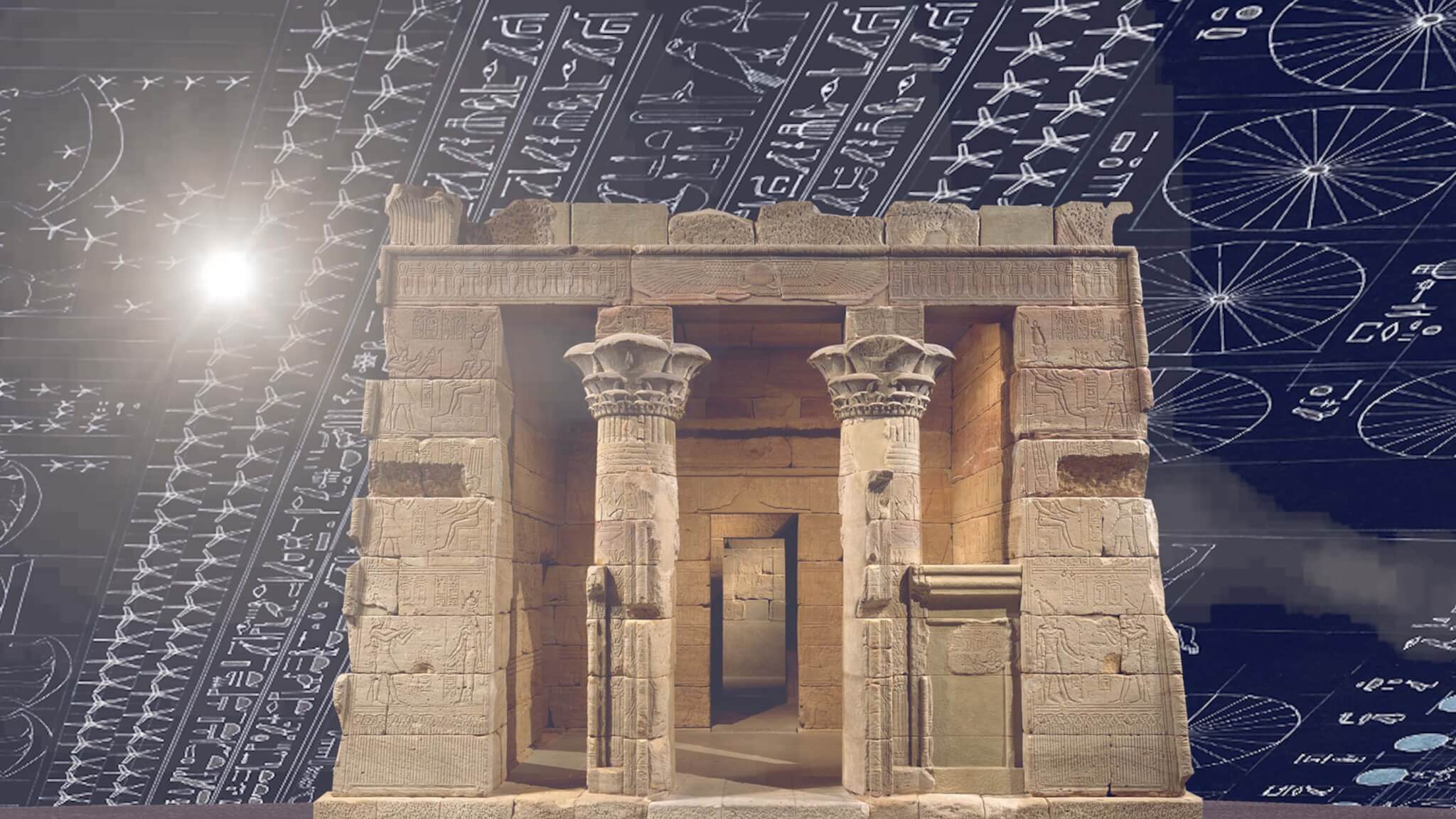
The particular ways in which The Met helps consolidate a settler-colonial, white supremacist U.S. American identity is rendered in Lealla Solomon’s The Etiquette Manual, which presents collages composed exclusively with artifacts, and artworks from the collection with both, etiquette, and good taste manuals of the period, and the official documents of Manifest Destiny, the ideological program of the landscapes of indigenous genocide and violent dispossession celebrated in the Hudson River School paintings at the core of the American Wing.
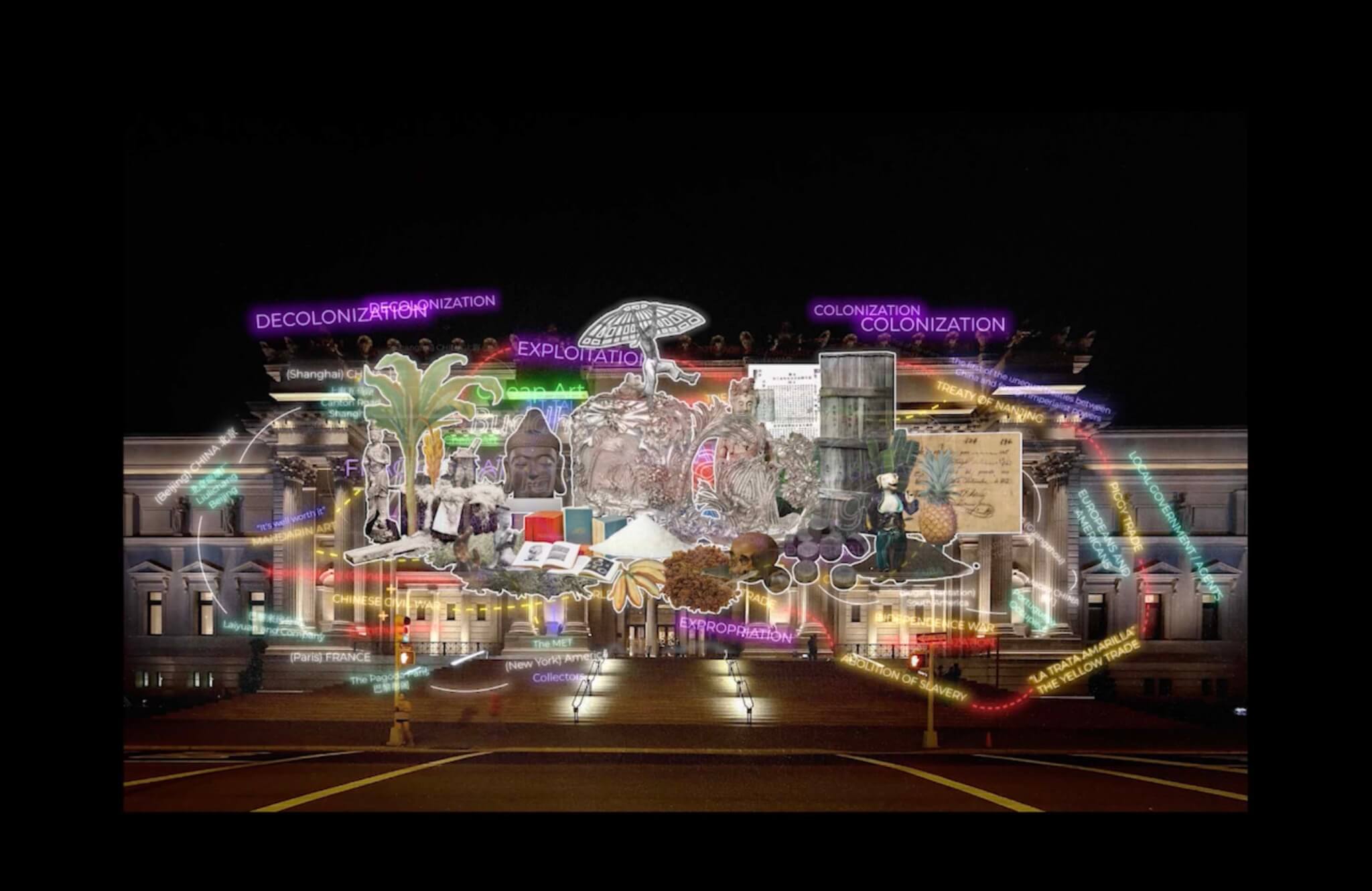
Together, the work of After the Great Loudreading: On Post-Colonial Routes to Repatriation, Reparations, and Reconstructions presents student works exploring institutional legacies through narrative architecture. The projects create spaces in which the official narratives of culture, patronage, philanthropy, provenance, and history can be questioned. While it will take more than architectural design to materially change these power relationships, the tools of architecture can be used to showcase, reveal, and critique the colonial operations that still shape our shared world.
Nathalie Frankowski and Cruz Garcia are Directors of WAI Architecture Think Tank and associate professors at Iowa State University, where they are Design for Critical Futures in Architecture fellows in Emancipatory Practice and Activism, respectively. They teach in the Advanced Architectural Design program at Columbia GSAPP and organize the free and alternative platform of education and trade school LOUDREADERS.









